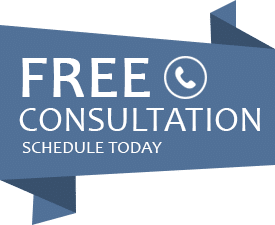 In today’s digital age, where online presence and user experience are paramount, the importance of optimizing websites cannot be overstated. Websites serve as the digital storefronts for businesses, and optimizing them for performance, speed, user experience, and search engine visibility can significantly impact their success. Let’s explore the stark contrast between optimized and non-optimized websites. Website optimization importance cannot be overlooked. Talk to experts about your website and business.
In today’s digital age, where online presence and user experience are paramount, the importance of optimizing websites cannot be overstated. Websites serve as the digital storefronts for businesses, and optimizing them for performance, speed, user experience, and search engine visibility can significantly impact their success. Let’s explore the stark contrast between optimized and non-optimized websites. Website optimization importance cannot be overlooked. Talk to experts about your website and business.
Optimized vs. Non-Optimized Websites: A Comparative Analysis
Performance and Speed
Optimized Website: An optimized website is designed for fast loading times, efficient resource utilization, and seamless performance across devices and browsers. According to Google, 53% of mobile site visitors leave a page that takes longer than three seconds to load.
Non-Optimized Website: Non-optimized websites suffer from slow loading times, high bounce rates, and poor user engagement. Studies show that a one-second delay in page load time can lead to a 7% reduction in conversions.
User Experience (UX) Design
Optimized Website: Optimized websites prioritize user experience with intuitive navigation, clear call-to-actions, mobile responsiveness, and user-friendly interfaces. 88% of online consumers are less likely to return to a site after a bad experience, according to Gomez.
Non-Optimized Website: Non-optimized websites often have cluttered layouts, complex navigation, and inconsistent design elements, leading to user frustration, lower engagement, and decreased customer satisfaction.
Search Engine Visibility (SEO)
Optimized Website: Optimized websites adhere to SEO best practices, including keyword optimization, meta tags, image optimization, sitemap creation, and mobile friendliness. Websites that appear on the first page of search results get 91.5% of Google traffic.
Non-Optimized Website: Non-optimized websites struggle to rank high in search engine results pages (SERPs), resulting in limited organic traffic, reduced visibility, and missed opportunities for customer acquisition and lead generation.
Conversion Rate Optimization (CRO)
Optimized Website: Optimization techniques such as A/B testing, conversion funnel analysis, personalized content, and optimized CTAs improve conversion rates and drive more sales and inquiries. 70% of marketers see CRO as crucial to their digital marketing success.
Non-Optimized Website: Non-optimized websites fail to capitalize on conversion opportunities, leading to low conversion rates, abandoned carts, and lost revenue potential.
Security and Trustworthiness
Optimized Website: Optimized websites prioritize security measures such as SSL certificates, HTTPS protocols, data encryption, and secure payment gateways, enhancing user trust and credibility. 85% of online shoppers avoid unsecured websites for fear of data theft.
Non-Optimized Website: Non-optimized websites with security vulnerabilities, outdated software, and poor encryption protocols risk data breaches, cyberattacks, and damage to brand reputation.
Benefits of Optimizing E-commerce Websites
Improved User Experience: Optimizing e-commerce websites enhances user experience, reduces bounce rates, increases page views, and boosts user engagement, leading to higher customer satisfaction and retention rates.
Higher Search Engine Rankings: Optimization improves search engine visibility, increases organic traffic, attracts qualified leads, and positions e-commerce websites prominently in search engine results, driving more targeted traffic and conversions.
Increased Conversion Rates: Conversion rate optimization (CRO) techniques such as streamlined checkout processes, persuasive product descriptions, compelling visuals, and social proof elements improve conversion rates, cart abandonment rates, and overall sales performance.
Enhanced Mobile Responsiveness: With the rise of mobile shopping, optimizing e-commerce websites for mobile devices ensures seamless browsing, faster loading times, and a frictionless shopping experience, catering to the needs of mobile users and maximizing conversions.
Data-Driven Decision Making: Optimization involves data analytics, performance tracking, and user behavior analysis, providing actionable insights for informed decision-making, continuous improvement, and strategic adjustments to enhance website performance and ROI.
Harnessing the Power of Optimization
The importance of optimizing websites, especially e-commerce websites, cannot be overstated in today’s digital landscape. Optimized websites deliver superior performance, enhanced user experiences, higher search engine rankings, increased conversions, and improved ROI. By investing in optimization strategies, businesses can stay competitive, meet customer expectations, drive business growth, and achieve long-term success in the dynamic and ever-evolving online marketplace. Optimization isn’t just about improving websites; it’s about unlocking their full potential and maximizing their impact on business outcomes. Website optimization importance cannot be overlooked. Talk to experts about your website and business.








